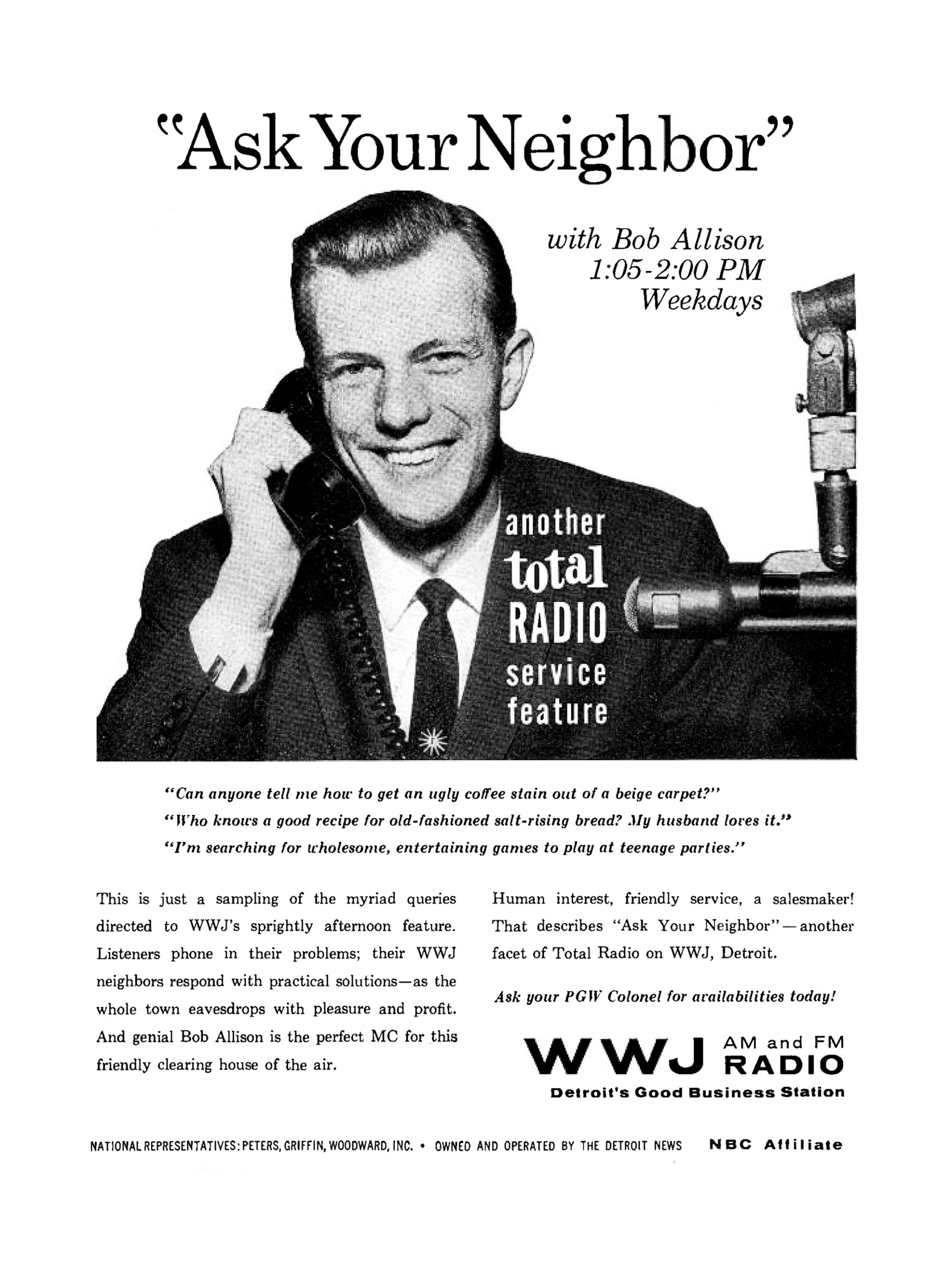
On your mobile device? Tap on image. Open to second window. “Stretch” news print across your device screen to magnify for largest print view.
![]()

*****
This list was selected from our weekly surveys as was determined by WXYZ Radio, based on reports by leading record outlets, record sales and popularity in the Detroit area throughout 1965.
— The GREG INNIS Collection —
This WXYZ (year-end) 1965 chart was digitally restored by Motor City Radio Flashbacks.
A MCRFB VIEWING TIP
ON YOUR PC?To fully appreciate this WXYZ Detroit Sound Survey chart for 1965 click on image 2x and open to second window. Click image anytime to return to NORMAL image size.
Click your server’s back button to return to MCRFB home page.
On your mobile device? Tap on chart image. Open to second window. “Stretch” chart across your device screen to magnify for largest print view.
___
A special THANK YOU to Greg Innis, Livonia, Mi., for previously sharing this WXYZ music chart with Motor City Radio Flashbacks.
![]()
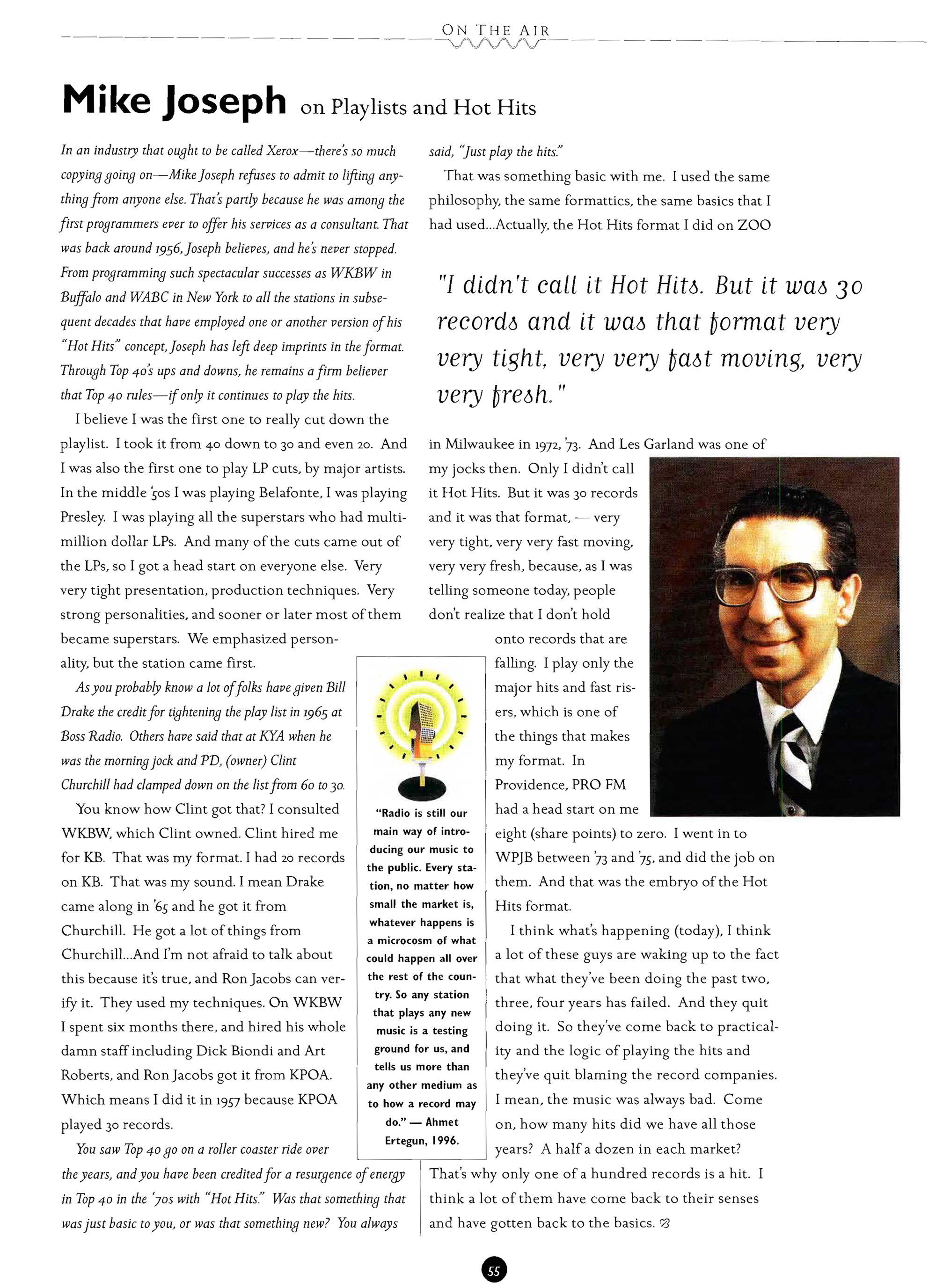
A DETROIT TOP 40 RADIO PIONEER
___
Before there was Bill Drake, Ron Jacobs, Paul Drew in the mid-1960s, in the beginning of Top 40 radio in the 1950s there was Mike Joseph. In essence, before the KHJ phenomenon was to hit the radio top 40 industry in 1965, Joseph was the perennial radio programmer who birthed the shortened ’30 hits playlist’ in Buffalo’s WKBW in 1957.
Mike Joseph also transcended the short playlist concept here in Detroit when WKMH hired the legendary programmer in 1963. Under Mike Joseph, WKMH became the former on October 31, 1963 — becoming the new WKNR Radio 13 — short playlist and all — and the rest is Detroit radio history.
In the early 1980s, Mike Joseph would return back to Detroit. WJR and station owner Capital Cities Communications hired Joseph for program consultancy for its adult, easy-listening WJR-FM — turning it instead into a new and successful Top 40 powerhouse in the Motor City in 1982 with his ‘Hot Hits’ formula — the new FM WHYT 96.3.
A MCRFB VIEWING TIP
ON YOUR PC?To fully appreciate this Radio & Records feature click on image 2x and open to second window. Click image anytime to return to NORMAL image size.
Click your server’s back button to return to MCRFB home page.
On your mobile device? Tap on chart image. Open to second window. “Stretch” chart across your device screen to magnify for largest print view.
A MCRFB NOTE: This page/article was taken from a R&R (Radio & Records) special edition published in 1996. The magazine, ‘Bill Gavin’s Top 40’, was published twenty-three years ago in recognition of the 40th anniversary, birth of top 40 radio, 1956.

![]()
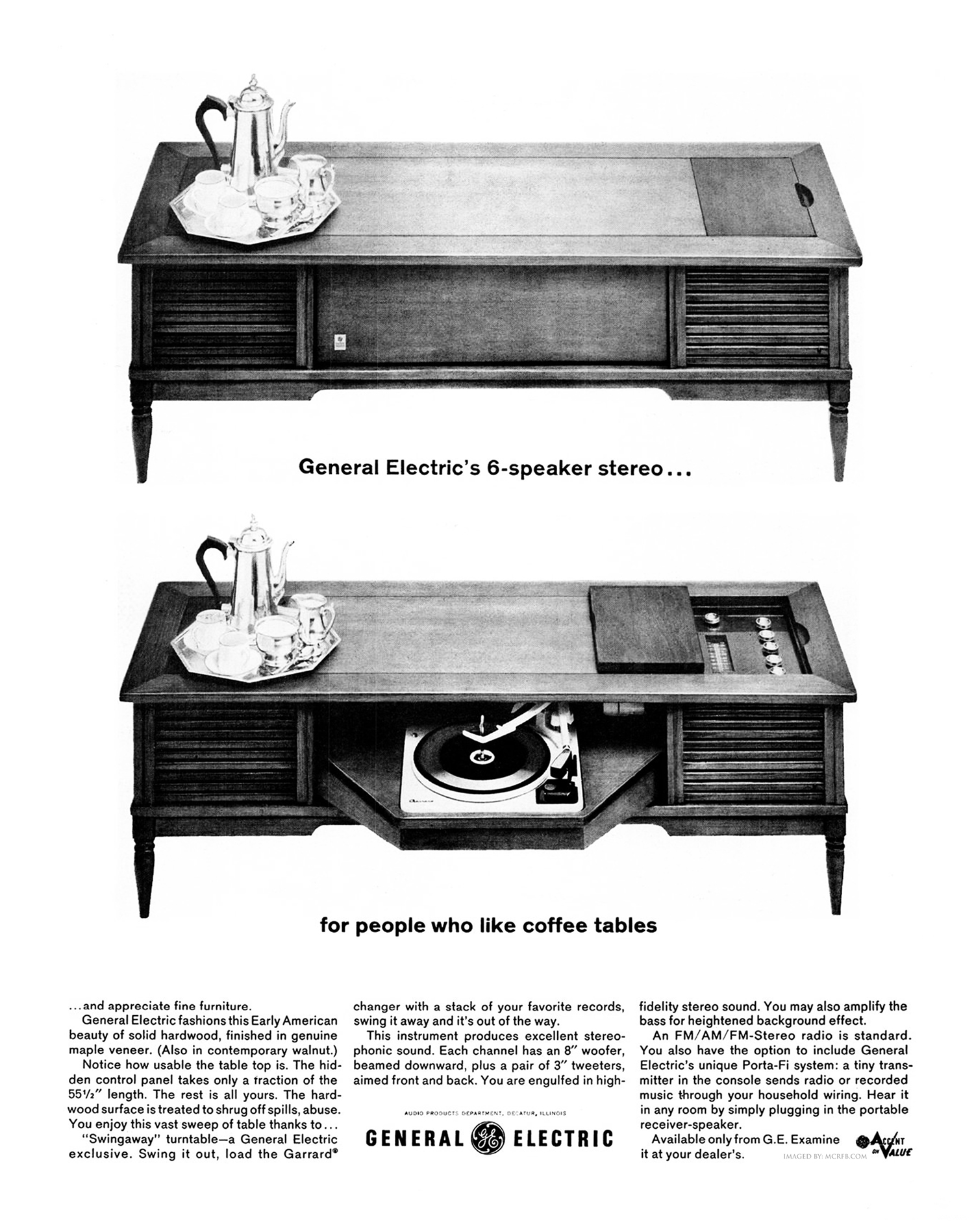
— AN AMERICAN HOME ENTERTAINMENT PRODUCT AD from 1963 —
A MCRFB VIEWING TIP: On your PC? You can read this entire ad ENLARGED. For a larger detailed view click above image 2x and open to second window. Click image anytime to return to NORMAL image size.
Click your server’s back button to return to MCRFB.COM home page.
On your mobile device? Tap over image. Open to second window. “Stretch” across your device screen to magnify for larger print view.
Above 1963 GE ad digitally restored by Motor City Radio Flashbacks

![]()
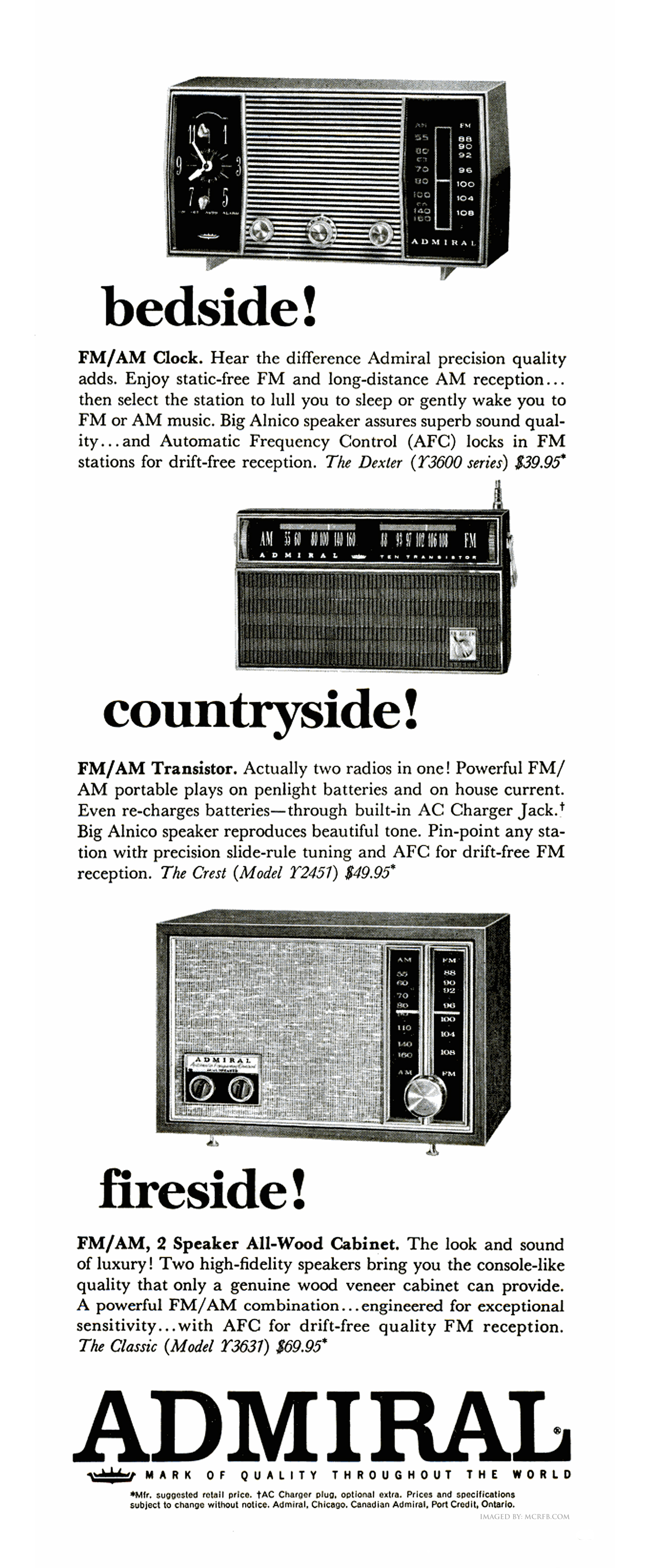
— AN AMERICAN HOME ENTERTAINMENT PRODUCT AD from 1964 —
A MCRFB VIEWING TIP: On your PC? You can read this entire ad ENLARGED. For a larger detailed view click above image 2x and open to second window. Click image anytime to return to NORMAL image size.
Click your server’s back button to return to MCRFB.COM home page.
On your mobile device? Tap over image. Open to second window. “Stretch” across your device screen to magnify for larger print view.

![]()

— AN AMERICAN HOME ENTERTAINMENT PRODUCT AD from 1965 —
A MCRFB VIEWING TIP: On your PC? You can read this entire ad ENLARGED. For a larger detailed view click above image 2x and open to second window. Click image anytime to return to NORMAL image size.
Click your server’s back button to return to MCRFB.COM home page.
On your mobile device? Tap over image. Open to second window. “Stretch” across your device screen to magnify for larger print view.

![]()


___
DETROIT FREE PRESS
Above article is courtesy freep.com newspaper archive. Copyright 2019. Newspapers.com.
The above CKLW newspaper feature was ‘clipped,’ saved, and imaged from the credited source by Motor City Radio Flashbacks.
A MCRFB VIEWING TIP: On your PC? You can read this entire article ENLARGED. For a larger detailed view click above image 2x and open to second window. Click image anytime to return to NORMAL image size.
Click your server’s back button to return to MCRFB.COM home page.
On your mobile device? Tap over image. Open to second window. “Stretch” across your device screen to magnify for larger print view.
Missed any of our previous ‘Detroit Radio Back-Pages‘ features? GO HERE.
A WORD ON THE ABOVE ARTICLE —

A few days ago, in search for materials on Eddie Chase (CKLW) in the Detroit Free Press newspaper archives, I inadvertently came across the featured article above.
Looking closely, I noticed the young man centered in the photograph, identified as Jim Beasley. To me, the photo bore a striking likeness to a Jim Sanders (whose real name, by the way, was Jim Beasley), a Detroit radio personality on WKMH in 1963.
But I really wasn’t sure.
Looking for some confirmation, I reached out to Jim, who recently wrote —
“Yup. That was me.
I was 18 there. I was attending Wayne State University then. I sang on WJR as Jim Beasley, was on air and student PD at WDET in 1957 and was the Jim Sanders on WKMH.
We recorded two sides as a quartet. I recording one duet with Jack Costello, “My Little Fool” and I did a single, “Caught, Roped and Tied.” The latter was released in 1959. Under Jim Beasley and the Charmers.
The Classmates were active in 1956-1957. Dick Allman and I left the group in 1958 when it was picked up by Dot Records. He and I did not want to leave college to travel and promote.
Two other singers replaced us for one release on Dot, “Who’s Gonna Take You To The Prom.” The record company put the group on the shelf, and consequently, disbanded before 1960.
Insofar as (former members of) The Classmates, Kris Dorjath is now deceased. I lost contact with Jack Costello. Dick Allman became an ABC TV engineer in New York. He did a lot pioneering graphics for ABC sports. Allman is now retired, living in New York. His mother was an actress on the Lone Ranger radio shows.
“Caught, Rope And Tied” was me recording as Jim Beasley, not the Classmates. “Gotta Go See My Baby” was the Classmates single that did the best in Detroit and throughout the Midwest.
My solo record did best in the South and Europe. It is still streamed in Denmark on rockabilly channels. It was re-released later as part of a rockabilly collection.”
Jim Beasley was a WKMH radio personality and was part of the first original lineup as Jim Sanders when WKNR launched on October 31, 1963. Jim is actively involved in the entertainment field as an actor, singer, dancer, and musician.
He currently resides with his family in Nashville, Tennessee.
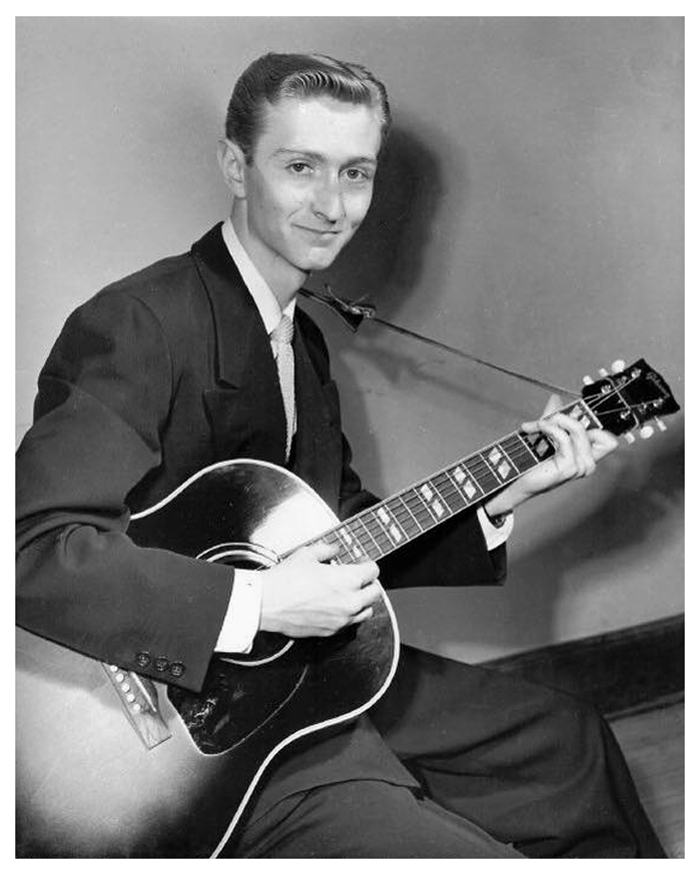


![]()
 From the MCRFB NEWS archive: 1963
From the MCRFB NEWS archive: 1963
The Bill Gavin Newsletter October 12, 1963
From the Desk of Bill Gavin Billboard Contributing Editor
Record promoters are the personal points of contact between broadcasting and the record business. As is well known, the relationship between the two is not the smoothest. Some of the rough spots are created by inept promotion people.
 In daily contacts with radio people throughout the country, I hear a large number of complaints about members of the promotion fraternity. Some of the annoyances arc petty, some are serious. I have tried to sum up DJ views on promotional irritants in the form of the various types below, following where possible verbatim quotes from my friends in radio.
In daily contacts with radio people throughout the country, I hear a large number of complaints about members of the promotion fraternity. Some of the annoyances arc petty, some are serious. I have tried to sum up DJ views on promotional irritants in the form of the various types below, following where possible verbatim quotes from my friends in radio.
The liar: Examples: “I brought you that record last week.” “I don’t know how the other station got that exclusive. The publisher must have sent it to ’em.” “It’s already sold 20,000 in Chicago, and we’re back- ordered up here.” “Their manager and I are just like that. Make it a pick and I’ll get ’em for your hop.” This man will say almost anything to get his record played.
The big shot: He thinks he’s doing somebody a favor by dropping in. He calls the record librarian and asks her to arrange lunch or dinner dates with the DJ’s. He’s from the big town – works for the big company. He talks about how important he is in the organization – how the a.&r. men ask his advice – how chummy he is with the big name artists. He’s doing you a favor to let you play his records.
The griper: Business is terrible, he says. Nothing is selling. Those short play lists are crazy. It’s a conspiracy by the radio stations to kill the record business. How can a manager be so stupid? Retailers won’t order new records – just the top 40. The other promoters are all liars. The boss expects him to get all his records played, but how can he do that on such a miserably small expense account. He got up at 5 a.m. to take that visiting artist for a TV appearance, but the guy slept in. You can’t win.
The know-it-all: He’s the one who tells you that all the other stations are playing the record. It jumps 30 places in the Billboard chart this week. This is the side we’re working on, he says. If you like the flip, well lots of luck. His idea of promotion is to tell you which side he likes. All the top DJ’s in the country are his personal friends and they’re all wailing on his records.
The Gossip: He knows all the dirt about everybody. He spreads enough rumors to fill a newspaper. So-and-so is breaking up with his wife. So-and-so is getting fired. And so on. You’d never guess that he is being paid for promoting records. His chief delight is in promoting suspicion.
The snoop: He tries to read all the letters and memos on every desk in every office he enters. He’s a master at reading upside down printing. He picks up odds and ends of papers on the desk. It’s hard to tell what he’s looking for or what he finds out, but whenever he comes in the door, any confidential papers on the desk had better be put out of sight.
The loud mouth: He tries to dominate every conversation with his voice. He talks too much – he interrupts -he shouts. He many not have anything important to say, hut he makes sure that nobody else gets a chance. He can’t even keep still while his record is being auditioned – snaps his fingers, jumps around, and keeps talking about it. He barges in on other people’s conversation. He pushes in anywhere. It’s practically impossible to insult hint.
The jelly fish: This man is running over with flattering remarks. The person he is talking to is always the greatest in the business – the greatest ear. the finest voice, the best ad libber. Name it and you can have it. He laughs at your unfunniest jokes. This kind of promoter is often very successful at his job. A surprisingly large number of DJ’s are only too ready to believe every flattering word he says.
And so it goes. The cast of characters outlined above represents some of the more irritating personality traits encountered by radio people in their dealings with record promoters. Fortunately, these objectionable attributes are comparatively rare in their pure form. The majority of promotion people are pleasant companions and a credit to the record business. END
___
(Information and news source: Billboard; October 12, 1963)

![]()
 From the MCRFB NEWS archive: 1963
From the MCRFB NEWS archive: 1963
The David Lachenbruch Equipment Newsletter October 12, 1963
FM STEREO, during 1963, has become a nationwide medium – and a nationwide selling opportunity. There are now 250 North American FM stations broadcasting at least part of their schedules in stereo. (This includes 12 in Canada.)
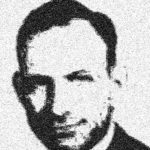
In the U. S., FM stations are broadcasting in stereo in 42 of the 50 States, plus the District of Columbia and Puerto Rico. As of this writing, 48 of the top
50 markets (in terms of population) are served with clear, local multiplex stereo
signals – as well as many, many smaller markets. Many of the larger cities have a wide choice of FM stereo signals. In Chicago, for example, seven stations are broadcasting in stereo now, with the recent addition of WXRT -FM. Detroit has six. San Francisco and Seattle have five each.
We’ve been watching FM stereo closely in this column – and particularly its emergence as a nationwide medium – because we believe it provides the greatest home music instrument selling opportunity since the introduction of the stereo disk.
Now that perhaps more than 80 per cent of the nation’s population is within the range of FM stereo broadcasting, awareness of this new medium should increase rapidly. From the standpoint of the manufacturer, it’s now worthwhile to advertise FM stereo on a national basis. It’s no longer a regional market. Dealers, of course, can be in a position to capitalize on this promotion – even those in areas without FM stereo service now.
EARLIER THIS YEAR, we predicted that a million FM stereo receivers of various kinds would he sold this year. We believe this forecast is still valid; in fact, it may be somewhat on the low side as the result of introduction of large variety of new FM stereo receiving equipment.
The component high fidelity field often foreshadows trends in the packaged audio equipment market. Monophonic FM tuners in the component field have virtually been replaced by stereo tuners. In packaged goods, this trend will spread first to stereo phonographs. By the end of this year it’s a good bet that nearly all radio – phonograph combinations and radio – TV- stereo combinations, except for the low-end models, will have FM stereo.
But right now FM stereo is something you must sell up to in the console field – since many console phonographs are available in three flavors; that is, without radio, with AM-FM and with AM-FM- stereo.
In the portable and table model phonograph field, an increasing number of high-end units are appearing now with FM stereo, extending the versatility of compact stereo instruments. Presently GE, Magnovox, Fisher, Emerson, Pilot, Symphonic, Phonola and others are offering various types of compact stereo phonos with FM stereo.
The biggest growth this year has been in the field of AM-FM stereo table model radios. Nearly all domestic manufacturers, and many importers, now have FM stereo table models.
BUT FM STEREO IS NEW. It doesn’t sell itself. Many prospective customers haven’t even heard of it, or are only vaguely aware of what it is. Helping to create an awareness of this new medium is where real salesmanship comes in FM stereo can be both an impulse item and a step-up item. In the packaged equipment field it’s been largely a step -up so far. We have yet to see a store with a window streamer inviting the public to “Come in and Hear the New FM Stereo.” If color television can be successfully merchandised this way – and it is – why not FM stereo?
Like color television, FM stereo usually has to be demonstrated to be sold. This means a good outdoor antenna, and knowledge of which local stereo station puts out the best signal -and the most easily demonstrable programming – in your area.
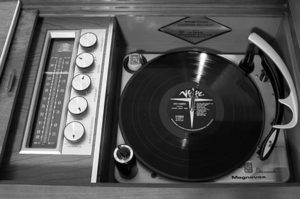
It seems inconceivable that any prospective customer should enter a store in search of a stereo phono or FM radio without being treated to a demonstration of FM stereo -and yet, in our own experience, this seems to happen more often than not. Just one question by the salesman – “Have you heard the new FM stereo ? ” – is enough to arouse interest in this latest radio development.
Salesmen should be thoroughly indoctrinated on FM stereo – what it is and how it works. Several radio -phono manufacturers have good booklets that will introduce them to it and give them the proper answers. Electronic Industries Association (1721 De Sales St., N. W., Washington) has an excellent pamphlet on FM stereo which should be must reading for salesmen.
ONE OF THE BEST WAYS to promote the sale of FM stereo equipment is through a tie-in with one or more of the local stereocasting stations. Some stations are aggressive and go out of their way to contact dealers and try to help them sell receivers. Unfortunately many stations aren’t self -starters in this respect. But every FM stereo station wants to increase its stereo audience as rapidly as possible, and most of them will be anxious to help promote FM stereo.
In many cities one of the most persuasive arguments for buying a stereo receiver is the amount of programming available in stereo. Some stations will give you quantities of their program logs for free distribution – so that prospective customers can see what they’re missing by not having stereo. Others have complete promotion kits, with window streamers, leaflets, etc. Most new FM stereo stations will be willing to give you advice on the best type of antenna installation for your store -some will even send a technician around to look it over if you’re having trouble.
If you wait for people to walk in off the street and ask you about FM stereo, you’re not taking maximum advantage of this new entertainment medium. On the other hand, if your store becomes “FM Stereo Headquarters,” if every salesman is well informed about FM stereo and instructed to demonstrate it to every customer, if you are equipped to give a good demonstration, and to give sensible advice on installation – then FM stereo can be the most profitable part of your music equipment sales this fall and winter. END

___
(Information and news source: Billboard; October 12, 1963)

![]()